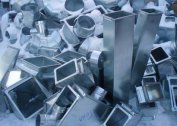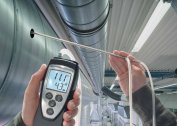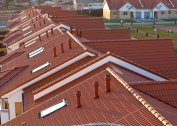Without proper traction, the operation of a fireplace and stove, heating gas, solid fuel boiler or column is impossible. Backdraft is an unpleasant phenomenon that gives residents much discomfort and is dangerous to health. If you find the chimney back draft, you must immediately look for and eliminate the causes of its occurrence.
What is reverse thrust
The definition of reverse draft means a malfunction of the heating system and chimney. According to the laws of physics, all air masses without natural ventilation tend to go where there is no resistance. In the presence of pipes and chimneys, the intensity of air movement increases. He begins to move forcibly. Chimneys are designed to create a forced draft for the removal of combustion products from the premises.
When laying the stove and organizing the chimney, special engineering calculations must be made to create the correct air flow direction. The thrust will occur due to the fact that the air pressure is different inside and outside the furnace.
Causes
Poor draft in the chimney can occur for various reasons.
- Blockages. Most often, owners of furnaces and boilers are faced with an obstruction of the chimney, which is formed due to clogging of pipes with garbage or soot during prolonged operation. It is strictly forbidden to make a chimney from pipes of various diameters. This will result in quick soot.
- Incorrect engineering calculations. When designing the chimney, errors were made in the calculations. For example, when using a powerful stove, a narrow chimney is installed. Because of this, a large flow of combustion products does not have time to go outside.
- Error in the calculation of the length of the pipes, which will lead to insufficient pressure difference. The most optimal pipe height should be at least five meters.
- Improper ventilation. If the room is completely absent or improperly equipped with ventilation, this will lead to a lack of the required amount of air flow.
- Accumulation of soot in smoke ducts. This is a common problem that can be resolved by regular cleaning.
If the roof ridge is installed above the chimney, the draft will tip over in gusts of strong wind.
Determining Backward Thrust
The return draft in the chimney is the second name “tipping”. Air masses do not pass through the chimney, as it should be, but back into the house. This is a dangerous phenomenon that can cause a fire and cause severe toxic gas poisoning.
To avoid negative consequences, it is recommended to always check the traction before starting the radiators. There are many ways to identify a violation. This can be done with simple folk methods:
- Light a candle, insert it into the firebox and observe the flame. If the light is directed inward, then the thrust is normal. If he remains in place and does not move, this indicates that there is no circulation of air masses.
- Bring a thin sheet of paper or ribbon to the edge of the pipe. If they stretch into the sleeve, then the chimney is functioning correctly.
- Verification can be done with a simple mirror. It must be brought to the chamber in which the fuel burns. If moisture appears on the mirror surface, this indicates that the combustion products do not go outside.
- The color of the flame in the furnace may indicate that the air circulation is not working properly. If the flame is bright orange, this indicates a violation. With proper traction, it will be yellow-golden.
Checking the correct draft in the chimney can be carried out using special devices. Measuring equipment allows you to get the most accurate indicators in pressure units. The norm is parameters from 10 to 20 PA. Measurements must be carried out from two sides: at the base and at the top of the chimney. But such a technique is rarely used in private homes or apartments.
Ways to solve the problem
If the phenomenon arose due to a blockage, it is enough to remove the accumulated soot and clean the chimney. There are also many ways to deal with the chimney malfunctioning.
Deflector
Installing a deflector can help in solving the problem with traction violation. It is mounted on the top of the chimney. The device is designed to create additional traction using wind power. Deflectors are a wide range of devices that are designed to improve traction. Thanks to them, the risk of combustion products getting back into the room is reduced.
The deflector is designed to perform a number of functions:
- increased movement of air masses in the pipe;
- protection of chimney channels from clogging, snow and rain;
- repayment of sparks that arise due to incomplete combustion.
The functioning of the device is based on the laws of physics. In the process of moving gas through the pipe, a vacuum occurs, since the flow pressure on the pipe walls decreases. The deflector is designed to artificially create such a vacuum. Gases that fall into such conditions are removed by draft from the pipe.
Most often, the Grigorovich deflector is used. For its manufacture, aluminum, galvanization and stainless steel are used. Copper may also be used; it is not susceptible to corrosion. But such a device would be expensive.
Deflectors increase traction efficiency by more than 20%. In addition, the device improves the overall operation of the heating system. Thanks to the deflector, the fuel burns out completely, the level of heat transfer increases. In this regard, devices are very popular.
The deflector consists of an upper and lower cylinder and a pipe connecting them to each other. For fixing parts, a protective cap and brackets are installed. Not all models have a top cylinder. This is an optional item. If it is absent, the device will consist of a lower cylinder, which is installed on the output pipe, two caps (direct and reverse), as well as a diffuser designed for dissecting air.
Deflectors differ among themselves by the material from which they are made, by their appearance, and also by sensitivity to air flows. You can buy a classic model or modern unusual designs, for example, in the form of a weather vane.
Stabilizer
The most effective way to eliminate traction in the chimney is to install a reliable stabilizer. This is a modern device with automation. It turns on when the movement of air masses is disturbed in the pipe. As soon as the pressure is fully normalized, it automatically turns off.
The device is an extender resembling an umbrella. It is installed in the chimney. Under the umbrella there is a section intended for the intake of air masses from the outside. A special temperature sensor monitors the temperature of gases that rise up from the furnace. If the draft is broken, the sensor begins to overheat due to accumulated gases. At this moment, the inclusion is activated.
Pipe length extension
Often problems with traction arise if a layman was involved in the design of the chimney.Incorrect calculations lead to insufficient pressure in the system. If the upper edge of the pipe is too low, many bends of the chimney are made, the pipe is too short or the passages are narrowed, all these defects must be eliminated.
Each heating device needs a separate chimney. It is impossible to output several structures through one system.
Rotary turbines
One solution to problems with draft in the chimney is to install a turbine. It is equipped over the top of the chimney. Under the influence of wind, the turbine nozzle will rotate. The movement always takes place in the same direction. Due to this, a vacuum is created above the smoke channel.
The disadvantage of this method is its inability to work in calm weather. The turbine completely eliminates the possibility of debris or precipitation entering the chimney.
Temporary backdraft
Sometimes homeowners may experience temporary backdraft. Most often this happens if the heating structure is rarely used. For example, a stove is heated by wood only in winter. In the chimney, an accumulation of cold air occurs, which prevents the combustion products from freely leaving. As a result, smoke enters the rooms.
To get rid of the cold air in the chimney, it is recommended that you pre-ignite plain paper. A pair of burned sheets will help to slightly warm the air masses that rise through the pipe. After that, you can start full-fledged kindling.
If reverse thrust occurs regularly, the phenomenon cannot be ignored. It is necessary to find the cause and eliminate it as soon as possible. Proper traction is a guarantee of the effective operation of heating structures and the safety of residents.









